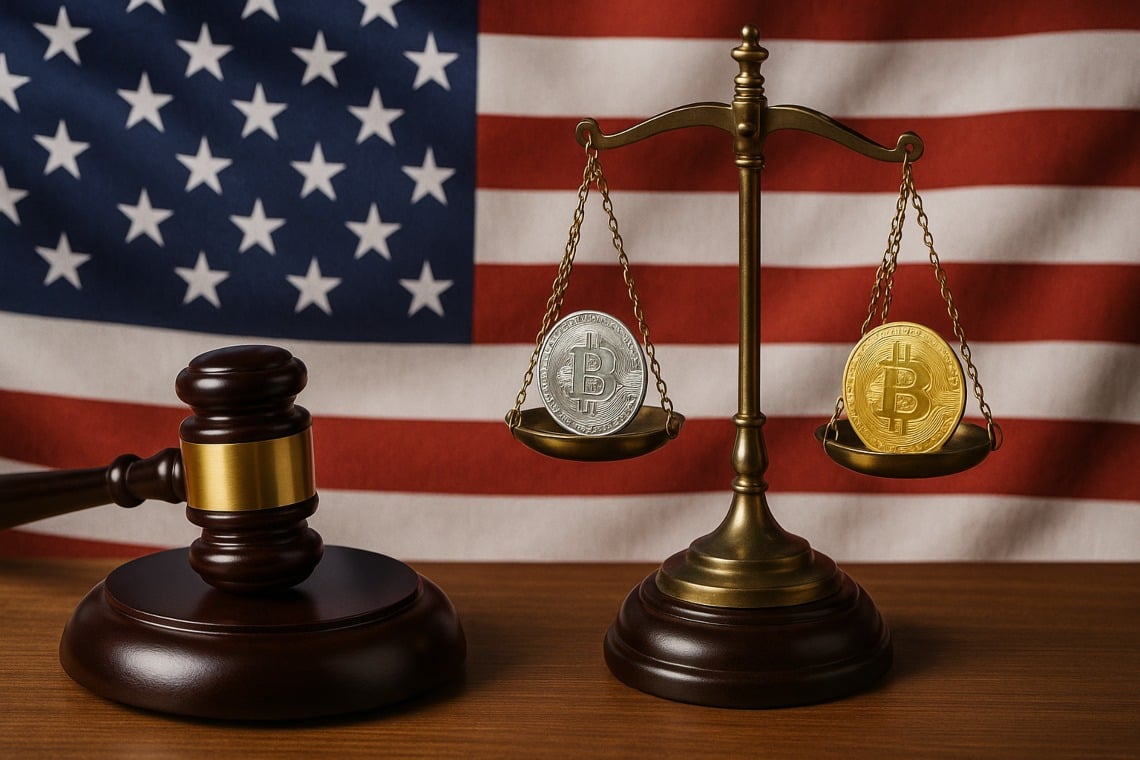Yesterday, the House of Representatives formally introduced the Digital Asset Market Clarity Act, a bill that aims to establish a clear regulatory framework for the digital asset market, responding to a request that the crypto industry has been making for years.
Digital Asset Market Clarity Act: an initiative led by the Republicans
The proposal, supported by the main Republican leaders of the House Financial Services and Agriculture Committees, represents the second major initiative by Congress to regulate the crypto sector.
The new bill is the successor of the previous Financial Innovation and Technology for the 21st Century Act (FIT21) and aims to address the broader and more complex issue of market structure, compared to the regulation on stablecoin, which remains in a more advanced position in the legislative process.
According to the representative Dusty Johnson, a Republican from South Dakota and chairman of the agriculture subcommittee dedicated to digital assets, “America should be the global leader in the digital asset market, but we cannot be without a clear regulatory framework.”
The central role of the Commodity Futures Trading Commission
One of the key elements of the Clarity Act, which is 236 pages long, is the assignment of a leading role to the Commodity Futures Trading Commission (CFTC). The agency would obtain exclusive jurisdiction over the spot or cash markets of digital commodities, which represent the majority of crypto activity according to the current view of U.S. regulators.
The bill provides for a system in which crypto platforms can register with the CFTC or the Securities and Exchange Commission (SEC), depending on the type of asset handled: digital commodities like Bitcoin or financial securities. Entities wishing to register as exchanges, brokers, or dealers of digital commodities can obtain provisional registrations while the CFTC works on drafting the final rules.
New rules for platforms and custody of assets
The Clarity Act requires that crypto platforms be regulated as financial institutions under the Bank Secrecy Act. Additionally, it excludes certain decentralized finance (DeFi) operations and wallet providers from SEC oversight. Another significant point is the prohibition for regulators to require custody companies to hold clients’ assets on their own balance sheets, a proposal previously advanced by SEC staff but later abandoned.
The bill also assigns certain responsibilities regarding payment stablecoin – which are explicitly defined as non-financial securities – to the regulator already responsible for the company involved in the activity. This approach aims to avoid overlaps and conflicts between federal agencies.
Another topic addressed in the Clarity Act concerns the so-called qualified custodians of digital assets, a controversial issue after the SEC had sought to limit the custody of clients’ assets to a narrow group of regulated entities. The new bill establishes that a qualified custodian must be subject to “adequate supervision and appropriate regulation” by federal, state, or foreign authorities. It will be the CFTC to define the specific standards.
DeFi and NFT: study and report within a year
Regarding DeFi, the Clarity Act postpones direct regulation, instead requiring the SEC, the CFTC, and the Department of the Treasury to conduct an in-depth study and present a report within a year. The Government Accountability Office (GAO) will also be tasked with drafting an analysis on DeFi and non-fungible tokens (NFT).
Timelines and legislative challenges
If approved, the law would give regulators one year to implement the new market structure rules. However, it is an ambitious deadline, considering the complexity of financial regulation. Previous experiences, such as the Dodd-Frank Act of 2010, demonstrate that some provisions can take years to be fully implemented.
In the meantime, the Senato will return next week to discuss its own stablecoin bill proposal, which has already overcome several procedural hurdles with a certain degree of bipartisan consensus. However, strong reservations persist from the Democrats, particularly due to President Donald Trump‘s personal ties to the crypto sector, which his administration is seeking to regulate.
Towards a unified legislative strategy?
The debate remains open on a possible merger between the bill on stablecoins and the one on market structure, to create a single major legislative initiative on crypto. President Trump has expressed the desire for both measures to reach his desk before the Congress summer recess in August, but many industry experts in Washington consider this timeline extremely optimistic.
The competent committees of the Chamber will hold a series of public hearings on digital assets next week, providing legislators with the opportunity to discuss in detail the contents of the Clarity Act and to engage with experts and stakeholders in the sector.
In summary, the Digital Asset Market Clarity Act represents a concrete step towards a clearer and more structured regulation of the U.S. crypto market. With an approach that balances innovation and oversight, the proposed law could mark a turning point for the entire digital ecosystem, laying the foundations for American leadership in the digital asset sector.
